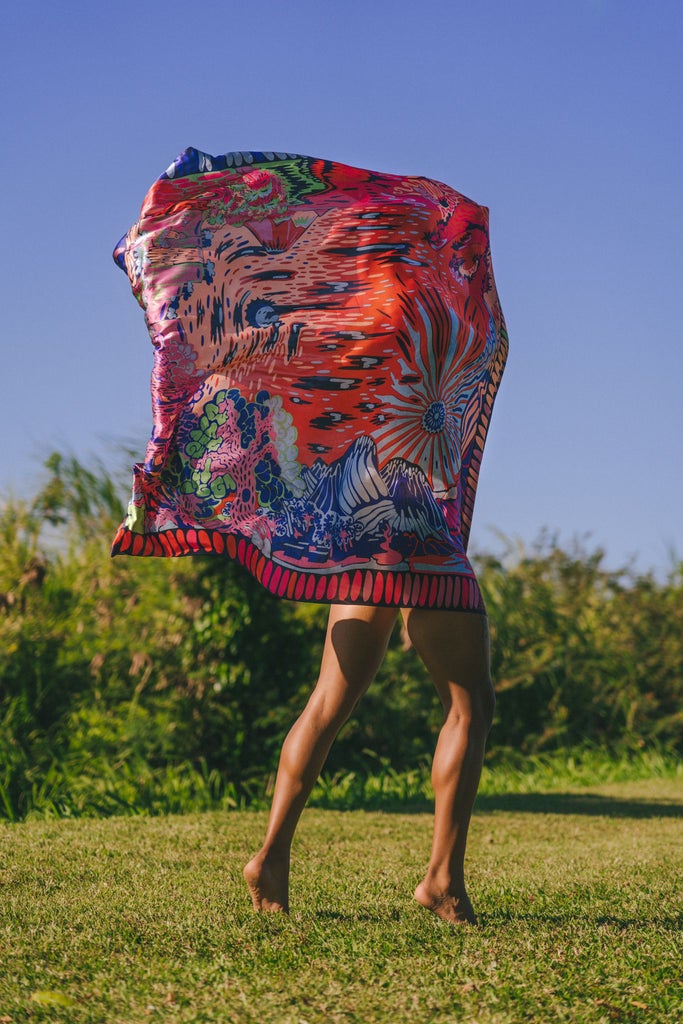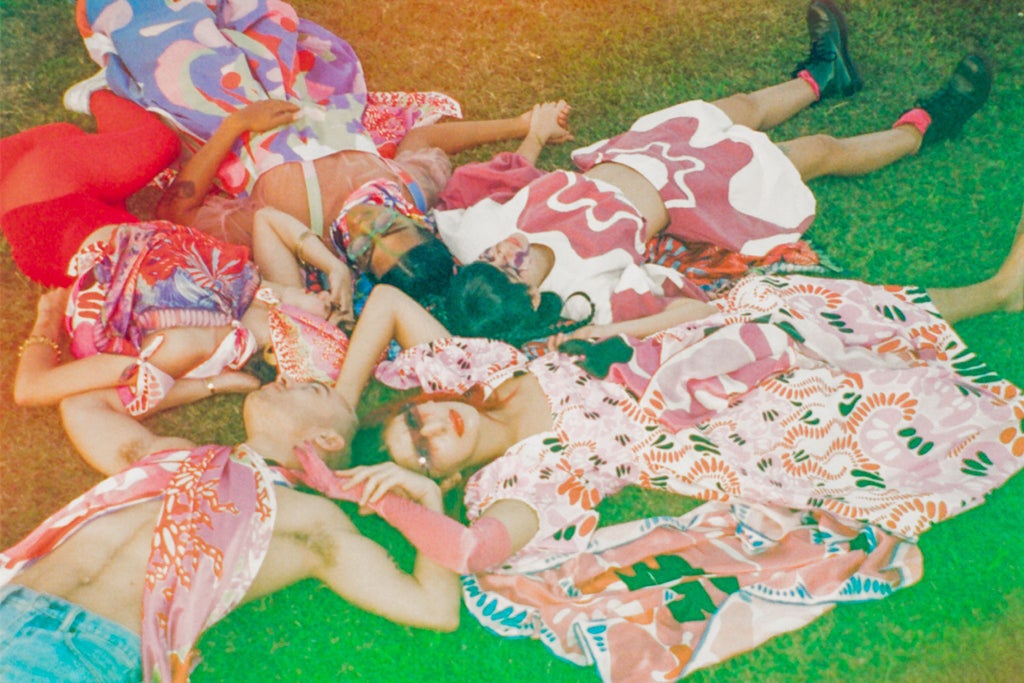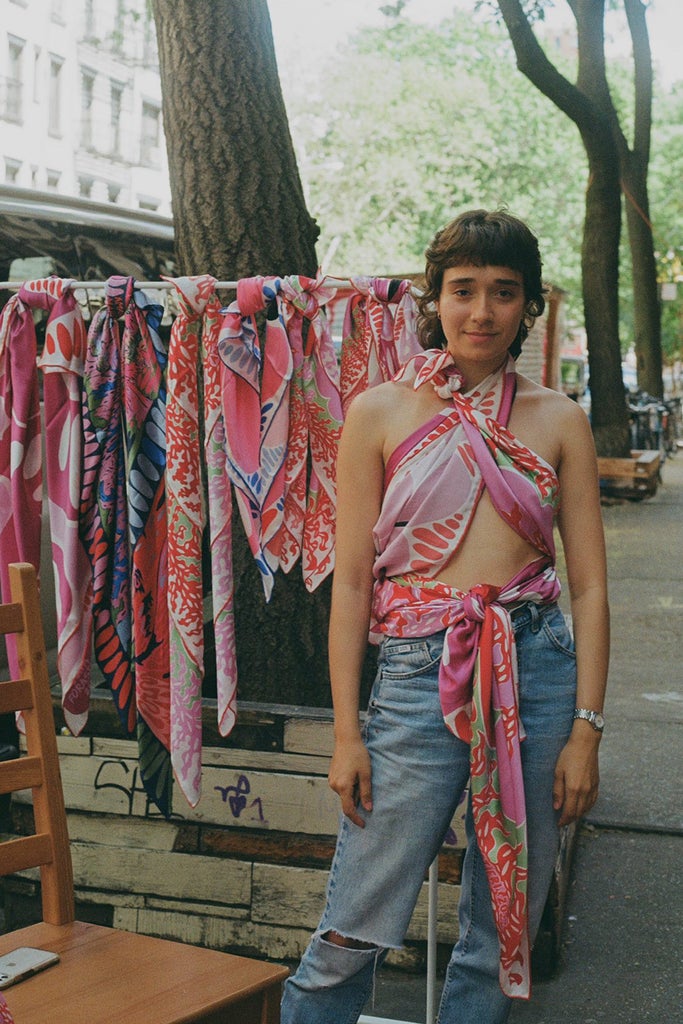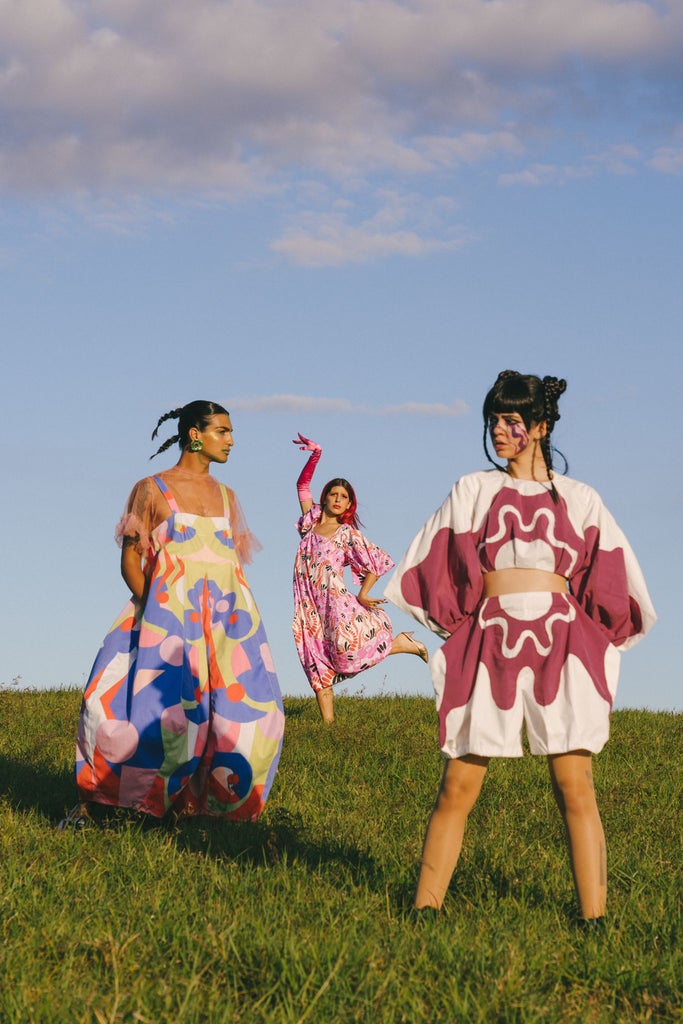
Even before launching her namesake brand earlier this year, Puerto Rico-born designer Amanda Forastieri has used fashion as a tool of political and cultural expression. The Drexel University alum’s student collections, titled “La lucha de la Borincana” (A Puerto Rican’s fight) and “Utopia,” delved into themes like Puerto Rico’s femicide crisis and the human-nature relationship. Following her winning the 2020 Supima Design Competition, Forastieri is now intent on building a brand rooted in sustainability, decolonization, and transparency.
For the brand’s debut collection — titled “Fora,” a shortened version of the designer’s last name — Forastieri looked inward for inspiration. “This was the first time that I was able to create outside an academic or competition setting, so there was a lot of freedom,” she says. “Every part of the collection, visually and conceptually, is directly linked to a process of self-discovery.”

The eight-piece line — which includes a dress, a puff-sleeve top, a jumpsuit, a pair of high-waisted shorts, and three scarves — features Forastieri’s signature bold prints, including abstract geometrical shapes and psychedelic flowers, which are drawn by hand. Each garment is also named after an element of Forastieri’s brand mission: For example, the “Cuerpa” jumpsuit references a term queer communities in Puerto Rico have claimed to degenderize the masculine word for body. “[The collection] has a lot to do with emotional processes with other humans and nature, as well as transformation,” the designer explains.
While Forastieri got her design degree in Philadelphia and worked as a designer for other brands in cities like New York and Copenhagen, she says she wanted to come home for this collection — in more ways than one. That’s why Forastieri tapped the Cooperativa Industrial Creación de la Montaña in the town of Utuado in Puerto Rico to create the pieces, an unusual move for many of the archipelago’s creatives. (Although Puerto Rico has a long legacy of fashion designers — including New York Fashion Week alums like Stella Nolasco and Luis Antonio — few use local manufacturers to create their pieces, leaving garment workers to depend on government and military uniforms to maintain their operations.) “It was a new thing for both of us,” says Forastieri.

Amid a decade-long financial crisis and back-to-back natural disasters that have deepened Puerto Rico’s social and economic issues, many young creatives like Forastieri are using their craft to contribute to their homeland’s future and to “engage local communities for all aspects of the supply chain.”
“There are a lot of projects like mine developing in Puerto Rico,” she says, referring to spaces like the multi-designer sustainable fashion platform Modo Consciente. “It’s all about connecting to communities.”


Forastieri also leaned into sustainable practices, using natural dyes to create the larger-than-life prints the brand is known for. “I learned a lot about how wasteful dyeing with Pantone colors is,” she says of the collection, which includes some synthetic dyes. “So I tried to find a way to reduce that waste without sacrificing the vibrancy of the colors.” She partnered with other creatives for this pursuit: For example, for the magenta color in the “El Amanecer” (the dawn) top and pants, Forastieri tapped Brooklyn-based artist Cara Marie Piazza, who has previously worked with designers like Jason Wu, Eckhaus Latta, and Mara Hoffman, to create the shade from flowers. Forastieri says she’s looking for other ways to tap creatives in Puerto Rico who are using organic elements, like algae, to create original shades for future collections. “Those are alternatives that are much more in balance with our natural habitat,” she says.
While this is the first collection for the designer’s namesake brand, Forastieri is already looking for ways to expand, from handmade art to hand-drawn prints for other artists to use to new categories like swimwear. And though she entered the market through fashion, Forastieri emphasizes that the brand goes beyond clothes, aiming to be a project that connects communities with the clothes they wear.
Like what you see? How about some more R29 goodness, right here?
from Refinery29 https://ift.tt/5XjIn2Z
via IFTTT
